Have you ever wondered why your friend’s hair drinks up moisturiser like a sponge whilst yours seems to repel everything you put on it? Or perhaps you’re trying to figure out why some products work brilliantly on your friend’s hair but leave yours looking flat and greasy? The answer might just lie in understanding your hair’s porosity!
Hair porosity is one of those hair science terms that sounds fancy but is actually pretty straightforward once you understand it. Think of it as your hair’s ability to absorb and hold onto moisture – basically, how thirsty your strands are! At Lacy Locks, we see many clients who’ve been struggling with their hair routine for years, only to discover that they’ve been using completely the wrong products for their porosity level.
As the leading hair salon in Milton Keynes, we’ve helped countless clients crack the code of their hair’s unique needs. If your colour isn’t sticking, your extensions aren’t blending, or your hair routine just isn’t cutting it, porosity might be the piece of the puzzle you’ve been overlooking.
What is Hair Porosity? Learn Your Hair’s Needs
In this article, we’re breaking down everything you need to know about hair porosity, from simple ways to test it at home to care tips that actually work so your hair can look and feel its best.
Here’s what we’ll go over in this article:
- What is hair porosity?
- What is low porosity hair?
- What is high porosity hair?
- How to check hair porosity
- How to care for low porosity hair
- How to care for high porosity hair
- Normal porosity hair care
Ready to become a hair porosity expert? Let’s get started!

What is hair porosity?
Right, let’s start with the basics! Hair porosity refers to your hair’s ability to absorb and retain moisture. It’s all about the condition of your hair’s outermost layer – the cuticle. Picture your hair cuticle like the tiles on a roof: when they’re lying flat and tightly packed, it’s harder for moisture to get in or out (low porosity). When they’re raised, damaged, or have gaps, moisture can flow in and out much more easily (high porosity).
Your hair’s porosity is largely determined by genetics, but it can also be influenced by chemical processing, heat damage, and environmental factors. Some people are born with naturally low porosity hair, whilst others have hair that’s naturally more porous. But here’s the thing – most of us fall somewhere in the middle with normal porosity hair!
Understanding your hair’s porosity is really important because it affects everything from how your hair responds to treatments and styling products to how well it takes colour and how quickly it dries. It’s the foundation of creating an effective hair care routine that actually works for your hair.
What is low porosity hair?
Low porosity hair is like that friend who’s lovely but takes absolutely ages to warm up to new people! The cuticles are tightly closed and packed together, which means it’s quite resistant to letting moisture in – but once it does, it holds onto it really well.
If you have low porosity hair, you might notice that:
- Water tends to bead up and sit on top of your hair rather than soaking in
- It takes absolutely ages to get your hair wet in the shower
- Products seem to sit on top of your hair rather than absorbing into it
- Your hair takes forever to dry naturally
- Chemical processes like colouring or perming don’t work as well
- Your hair rarely feels moisturised, even when you use loads of product
Low porosity hair can be brilliant because it’s naturally quite healthy and resistant to damage. The downside? It can be a real pain to style and moisturise because everything just sits on the surface. Many of our clients with low porosity hair come to us frustrated because they’ve tried every expensive hair mask going, only to find their hair still feels dry and looks dull.
The key with low porosity hair is getting those cuticles to open up enough to let the good stuff in. This usually involves using gentle heat and lighter, water-based products rather than heavy creams and oils that’ll just weigh your hair down.
What is high porosity hair?
On the flip side, high porosity hair is like the mate who you tell a long story to and then forgets what you’ve said five minutes after – it absorbs everything quickly but doesn’t hold onto it for very long. The cuticles are raised or damaged, with gaps that allow moisture to flow in and out easily.
High porosity hair typically:
- Absorbs water and products quickly
- Loses moisture just as fast, leading to dryness
- Feels rough or tangled, especially when wet
- Is prone to frizz and flyaways
- Takes colour really well (sometimes too well!)
- Can look dull or lackluster despite using moisturising products
- Breaks easily and may have split ends
High porosity is often the result of chemical processing, heat damage, or rough handling over time; however, some individuals have naturally high porosity hair. If you’ve been bleaching, colouring, or using hot tools regularly, there’s a good chance your hair has become more porous over time.
The challenge with high porosity hair is that whilst it drinks up products beautifully, it also loses that moisture just as quickly. It’s like trying to fill a bucket with holes in it! The trick is learning how to seal those cuticles to lock in all the lovely moisture you’re giving it.
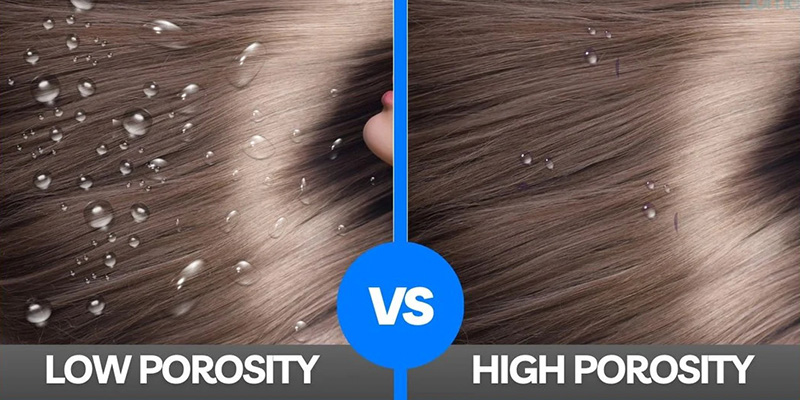
How to check hair porosity
Now for the fun bit – finding out what type of porosity your hair actually has! There are several DIY tests you can do at home, and we always recommend trying a couple of different methods to get the most accurate picture.
The Float Test
This is probably the most popular test, and it’s simple:
- Take a few clean strands of hair (make sure there’s no product buildup!)
- Fill a glass with room-temperature water
- Gently place the hair on the surface of the water
- Wait 2-4 minutes and observe
If your hair floats on top, you likely have low porosity hair. If it sinks slowly, you probably have normal porosity. If it sinks quickly to the bottom, you’ve got high porosity hair.
The Spray Bottle Test
This one’s brilliant for a quick check:
- Take a small section of clean, dry hair
- Spray it lightly with water
- Watch how your hair reacts
Low-porosity hair will have water beads sitting on top, normal-porosity hair will absorb the water gradually, and high-porosity hair will absorb it almost immediately.
The Slip and Slide Test
This test checks the texture of your cuticles:
- Take a strand of hair between your fingers
- Slide your fingers from the ends towards the roots
- Pay attention to how it feels
If it feels smooth, you likely have low porosity hair. If you feel some bumps or roughness, that suggests higher porosity.
Our experienced hairdressers in Milton Keynes can also help you determine your hair’s porosity during a consultation – sometimes a professional eye can spot things you might miss!
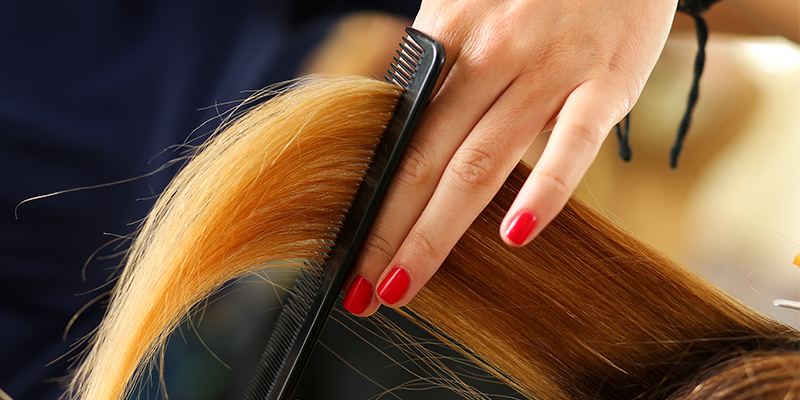
How to care for low porosity hair
If you’ve discovered you have low porosity hair, don’t panic! Yes, it can be a bit high-maintenance, but once you know what works, you’ll have gorgeous, healthy hair that’s the envy of all your mates.
Product Selection for Low Porosity Hair
The golden rule for low porosity hair is: light and liquid! Heavy creams and thick oils will simply sit on your hair, making it look greasy. Instead, look for:
- Water-based moisturisers and leave-in conditioners
- Lightweight oils, such as argan or jojoba (use sparingly!)
- Protein-free products (low porosity hair usually has enough protein already)
- Clarifying shampoos to remove product buildup
- Heat-protectant sprays rather than creams
Washing and Conditioning Low Porosity Hair
Low porosity hair needs a gentle approach with a focus on getting products to actually penetrate:
- Pre-shampoo treatments: Use a lightweight oil treatment before washing to help open the cuticles
- Warm water: Use slightly warmer water when washing to help open those stubborn cuticles
- Less is more: Don’t overload your hair with products
- Deep condition with heat: Use a hooded dryer or warm towel when deep conditioning to help products penetrate
- Rinse thoroughly: Make sure to rinse out all products completely to avoid buildup
Styling Low Porosity Hair
Styling low porosity hair is all about working with its natural resistance:
- Use heat to your advantage: blow drying can actually help products absorb better
- Try the LOC method: Leave-in conditioner, Oil, then Cream (but use tiny amounts!)
- Steam treatments can be brilliant for opening cuticles
- Avoid heavy styling products that’ll weigh your hair down
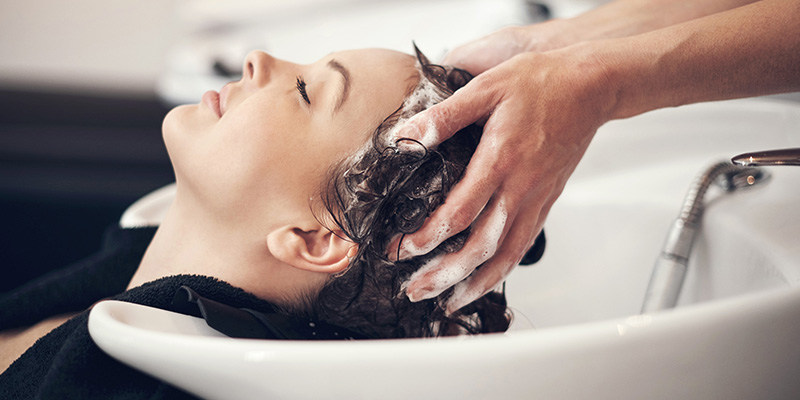
How to care for high porosity hair
If you’ve got high porosity hair, you’re probably already familiar with the struggle of trying to keep moisture in your strands! But don’t worry – with the right approach, you can absolutely get your hair looking healthy and gorgeous.
Product Selection for High Porosity Hair
High porosity hair craves moisture and needs help sealing it in:
- Rich, creamy moisturisers and deep conditioners
- Heavier oils and butters (shea butter, coconut oil, olive oil)
- Protein treatments to help fill in the gaps in damaged cuticles
- Leave-in conditioners with sealing properties
- pH-balancing products to help close the cuticles
Washing and Conditioning High Porosity Hair
The key is getting moisture in and keeping it there:
- Cool water rinses: Finish your wash with cool water to help seal the cuticles
- Pre-shampoo treatments: Use oil treatments before shampooing to prevent over-stripping
- Gentle, sulfate-free shampoos: Avoid harsh cleansers that’ll strip away moisture
- Deep condition regularly: Weekly deep conditioning treatments are essential
- Apple cider vinegar rinses: These can help balance pH and seal cuticles
Styling High Porosity Hair
Focus on sealing in moisture and protecting your hair:
- Try the LCO method: Leave-in conditioner, Cream, then Oil to seal
- Use styling products with film-forming ingredients to create a barrier
- Protective styles can help reduce moisture loss
- Always use a heat protectant before any heat styling
- Consider overnight treatments with oils or heavy creams
Professional Treatments for High Porosity Hair
Sometimes, high-porosity hair needs a bit of professional help. At Lacy Locks, we offer two treatments that can work wonders:
- Keratin treatments: These can help smooth the cuticle and reduce porosity
- Hair extensions: If your natural hair is severely damaged, our hair extensions in Milton Keynes can give you gorgeous length and volume whilst your natural hair recovers
Normal Porosity Hair Care
Lucky you if you’ve got normal porosity hair! This is often considered the “goldilocks” of hair porosity – not too porous, not too resistant, but just right. Your cuticles are slightly raised, allowing for good moisture absorption and retention without going overboard.
Normal porosity hair typically:
- Absorbs and retains moisture well
- Takes colour evenly and predictably
- Responds well to most hair treatments
- Doesn’t require too many special considerations
- Maintains styles relatively well
For normal porosity hair, you can usually get away with:
- Regular moisturising shampoos and conditioners
- Occasional deep conditioning treatments
- A variety of styling products (just avoid extremes)
- Normal heat styling with proper protection
- Balanced protein and moisture treatments
The Role of Professional Assessment
Whilst DIY tests are brilliant for getting a general idea of your hair’s porosity, there’s honestly nothing quite like having a professional assessment. At our salon, our experienced hairdressers in Milton Keynes can not only determine your exact porosity level but also spot other factors that might be affecting your hair’s health and appearance.
Professional assessment is particularly important if you’re considering:
- Chemical treatments like colouring or perming
- Hair extensions (porosity affects how well extensions blend and how they should be cared for)
- Major changes to your hair care routine
- Treatment for damaged or problem hair
We use specialised tools and our years of experience to give you a comprehensive picture of your hair’s condition, including porosity, elasticity, density, and overall health. This allows us to create a completely personalised care plan that addresses your hair’s unique needs.
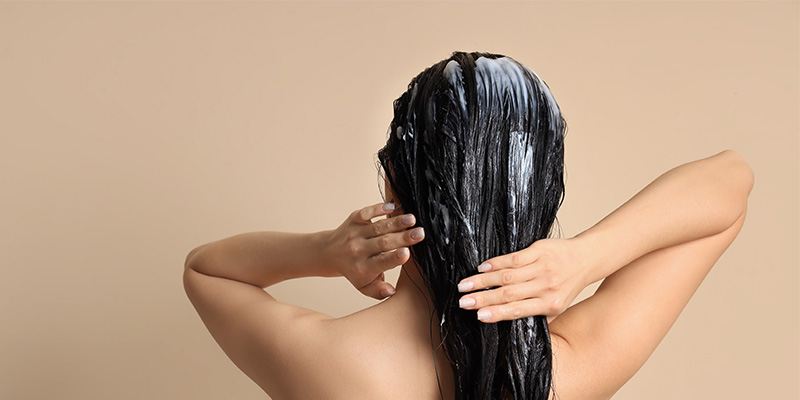
Common Porosity Mistakes and Myths
Let’s bust some myths and avoid some common pitfalls, shall we?
Myth: Hair porosity never changes
Truth: While your natural porosity level is largely genetic, it can definitely change over time due to chemical processing, heat damage, and even environmental factors.
Myth: High porosity hair is always damaged hair
Truth: Some people naturally have higher porosity hair that’s perfectly healthy!
Myth: You should only use one type of product for your porosity level
Truth: Your hair’s needs can vary depending on the season, your hair’s condition, and what treatments you’ve had recently.
Common Mistake: Overloading low porosity hair with heavy products
This just leads to buildup and greasy-looking hair. Remember: less is more with low porosity hair!
Common Mistake: Not sealing moisture into high porosity hair
Just adding moisture isn’t enough – you need to seal it in with the right products and techniques.
Porosity and Hair Extensions
If you’re considering hair extensions in Milton Keynes, understanding porosity becomes even more important! The porosity of both your natural hair and the extensions affects how well they’ll blend, how they should be cared for, and how long they’ll last.
At Lacy Locks, we always consider our clients’ natural hair porosity when selecting and fitting extensions:
- Low porosity natural hair: We might recommend slightly more porous extensions that can absorb the same amount of moisture and styling products
- High porosity natural hair: We often suggest treatments to improve your natural hair’s condition before fitting extensions
- Matching care routines: We provide detailed aftercare instructions that work for both your natural hair and extensions
The wrong porosity match can lead to extensions that look obviously fake, don’t take colour evenly, or require completely different care routines that are impossible to maintain.
Seasonal Porosity Care
Here’s something most people don’t realise – your hair’s needs can change with the seasons, and this is especially true when you understand porosity!
Summer Care
- High porosity hair needs extra protection from UV damage and chlorine
- Low porosity hair might benefit from lighter products in humid weather
- Both types need good sun protection
Winter Care
- Dry indoor heating can affect all hair types but especially high porosity hair
- Low porosity hair might need slightly heavier products in dry conditions
- Static control becomes more important
Understanding how your specific porosity level reacts to seasonal changes can help you adjust your routine throughout the year for consistently gorgeous hair.
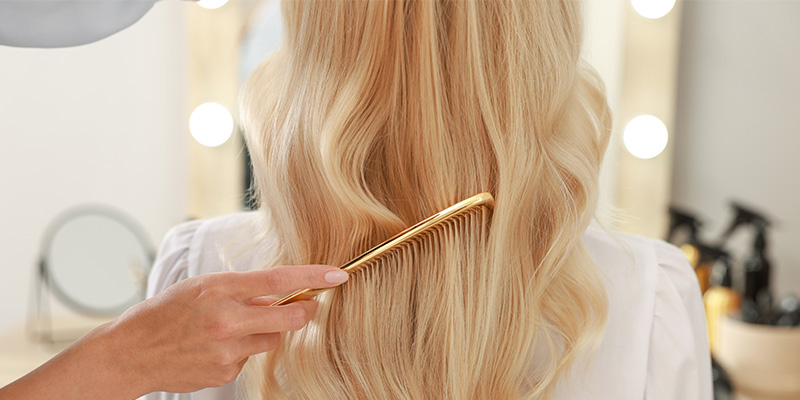
Taking the Next Steps
Now that you’re armed with all this porosity knowledge, what’s next? Here are our top recommendations:
- Test your hair’s porosity using the methods we’ve outlined
- Assess your current routine – are you using the right products for your porosity level?
- Make gradual changes – don’t overhaul everything at once
- Keep a hair diary – track what works and what doesn’t
- Consider professional help if you’re struggling or want personalised advice
Get Professional Porosity Help at Lacy Locks
Understanding your hair’s porosity is honestly one of the best things you can do for your hair health and styling success. But we know it can feel overwhelming, especially if you’ve been struggling with your hair routine for ages!
That’s where we come in. As Milton Keynes’ leading hair specialists, the team at Lacy Locks has years of experience helping clients understand and work with their unique hair needs. Whether you need help determining your porosity level, want advice on the perfect products, or are interested in treatments that can improve your hair’s condition, we’re here to help.
Our comprehensive consultations cover everything from porosity assessment to personalised care plans, and if you’re considering hair extensions in Milton Keynes, we’ll make sure they’re perfectly matched to your natural hair’s needs.
Ready to unlock your hair’s potential? Book a consultation with our expert hairdressers in Milton Keynes today, and let’s get your hair looking absolutely gorgeous – whatever your porosity level!
Contact One Of Our Experts Today
Make sure to leave your details below, and you’ll hear from us shortly.

